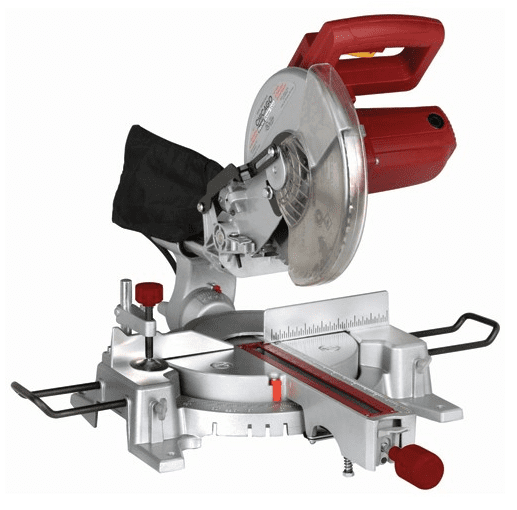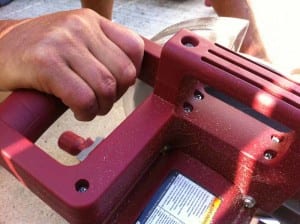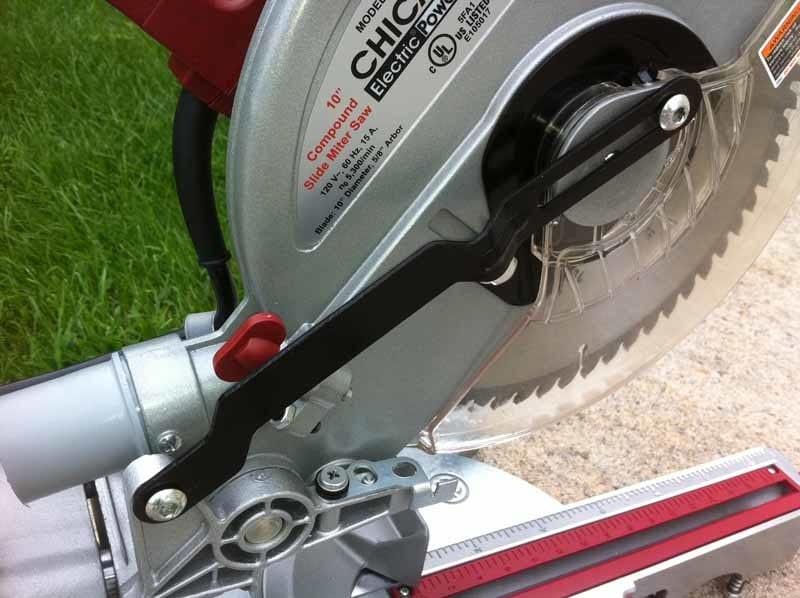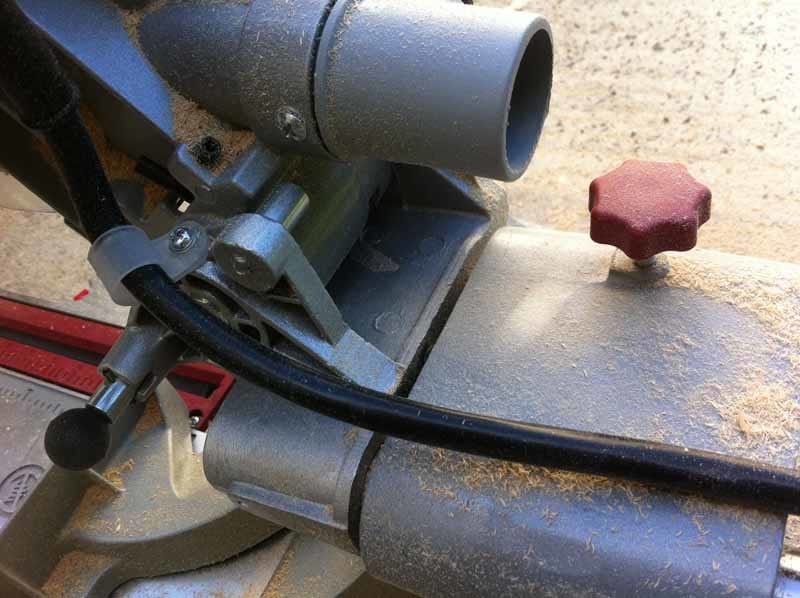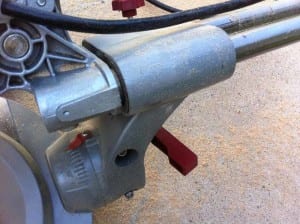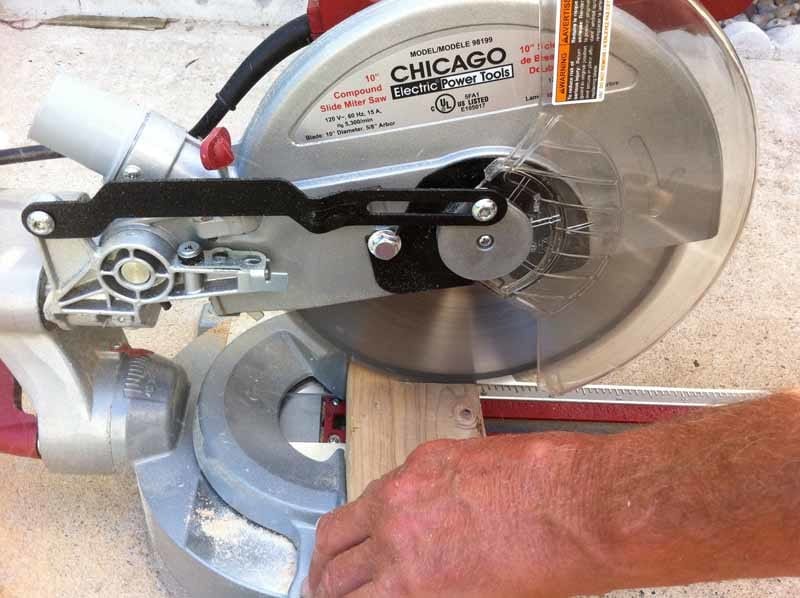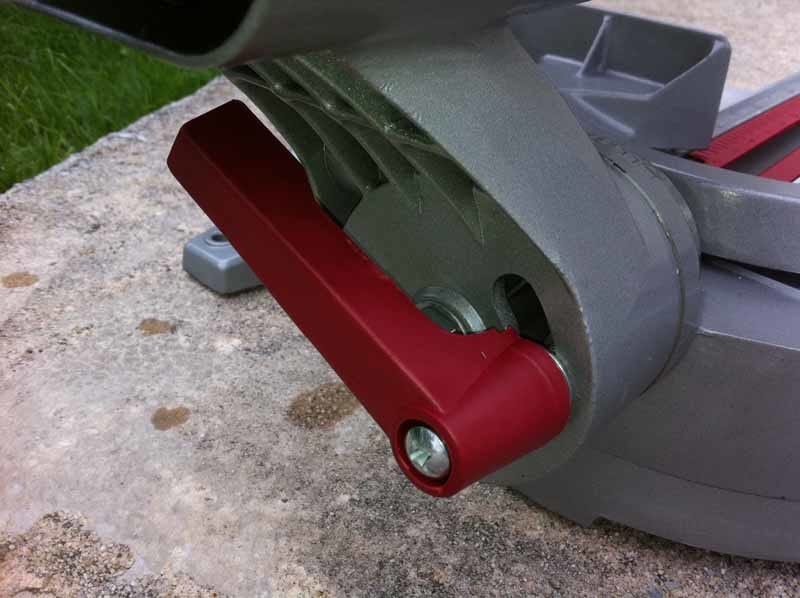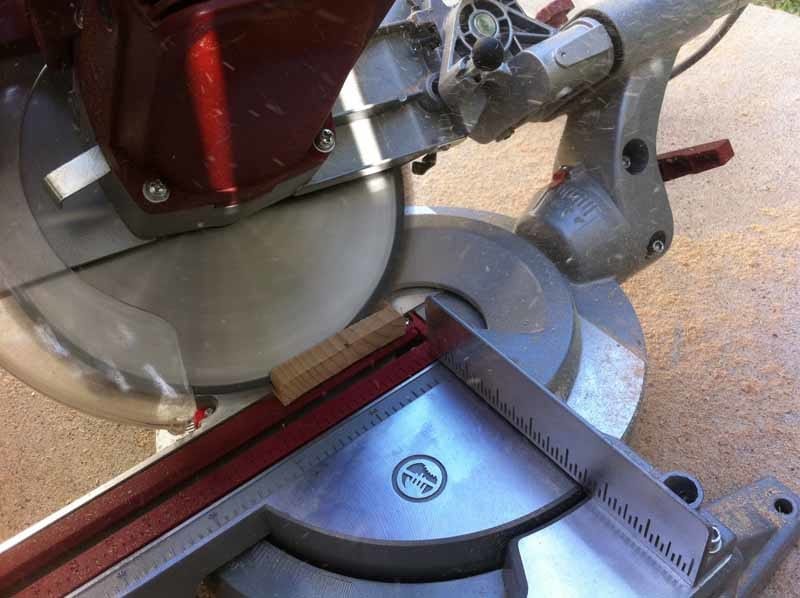Next to maybe a cordless drill and a table saw, the miter saw is a tool that every serious professional and do-it-yourselfer needs for his own. While the Chicago Electric 10-inch Sliding Compound Miter Saw from Harbor Freight is a real head-turner for its price, we wanted to know: Could it stand up to other heavy-duty products and hold its own? A lot was riding on this, as it’s easy enough to justify blowing a few bucks here and there on some “experimental” hand tools, but a $139 sliding miter saw? That’s a bigger leap of faith given the vast amounts of competition on the market. While the big boys are priced much higher for this type of product, Harbor Freight’s Chicago Tools line has itself placed smack dab in the middle of a bunch of generic tool names. Of course, that’s before coupons and discounts (I’ve seen this saw priced as low as $85.)
Chicago Electric 10-inch Sliding Compound Miter Saw Build Quality
Grabbing a miter saw is simple. Choosing a good compound miter saw is a bit harder. Add to that the slide mechanism, and you’ve got a lot of things to look at and consider when selecting a saw. Before we go to far, we thought we’d describe the various features and functions of the Chicago Electric 10″ Sliding Compound Miter Saw. Of least importance, but most obvious in nature, is the color. It’s the now-expected maroonish red Chicago Electric color they share with their reciprocating saw and corded multi-tool. The trigger is yellow and there is, thankfully, no safety. We like that. A miter saw may be a dangerous tool, but separate safety switches, as opposed to just making the pull-strength more rigid, is plain silly and inconvenient. Chicago Electric does it right.
Initially, the resistance was a bit tough when you pulled down on the handle, which incidentally, lacks any rubberized grip or coating. There is a hand-adjustable set screw for adjusting the tension, but it takes an Allen wrench to modify the default setting. While the saw came with two replaceable brushes and a blade-change tool, there was no included Allen wrench. We quickly located one and gave it a couple of turns to loosen up the spring and the arm dropped much more smoothly onto the material. Over time this tension may require some adjustment as the spring loosens up.
There is another adjustment screw for limiting the plunge depth and this was easy to use, as well as bypass with the pivoting lockout. There is also a separate maximum depth set screw, but the default setting was fine and it kept the included 60-tooth carbide-tipped saw blade from contacting the base.
The electrical cord is routed from the motor, along the slide mechanism and then off the back. We noticed a definite rubbing (wear) point where the electrical cord meets the first plastic guide after the strain relief. When you raise and lower the blade, there is lateral and horizontal movement that seems like it will eventually cause some wear on the cord and possibly even work through the insulation.
We measured the angle of wood cut at the notched 90-degree setting, and the saw was nice and square. Bevel cuts were also spot-on. The twin metal standouts give you about 5″ of extra support width per side, but they aren’t adjustable – you can either use them or remove them. In this way, they are only marginally helpful. A 2×4 laid on its side offers about the same level of support, so you may end up just removing them and gaining the additional compactness when storing the tool. The slide mechanism is made possible through the use of dual linear bearings, but the motion was rougher than most systems we’ve used and that’s only going to get worse as dust and debris work their way into the slides.
Using the Tool
10-3/4″ is about the maximum cutting capacity for the slide, despite what the packaging says, so a 2×10 is your dimensional limit on a single straight cut (as opposed to the claimed 12-3/16″, which we can only assume was with a piece of wood 1/8″ tall and the rear plastic bumpers removed from the slide mechanism). The rear fence is about 2″ high, so you’ll want to do flat crown cuts or use a makeshift fence to do angled cuts on smaller crown molding.
The rear bevel control lacks any positive stops and it’s a bit difficult to use, particularly since it’s located on the rear of the saw. The imprinted bevel miter gauge looks like it goes past 45 degrees, but it doesn’t. You’ll want to let the blade tilt to get a correct 45-degree angle and we suggest adjusting the bevel angle measurement pointer with a Philips screwdriver to make sure other angles are accurate. You also have to hold the saw in place while you reach around and pull the locking lever in place for any other angle. The bevel gauge is in 5-degree increments, so it will be difficult to dial in common measurements like 22.5 degrees.
The saw sounds rough when it runs, the opposite of the smooth operation you’d expect from a precision tool. I guess the bearings (which might be needle-type or perhaps just not packed tightly enough) are probably going to stay rough throughout the life of the saw. It didn’t seem to affect performance, and the cuts were nice and straight, but we couldn’t help feeling as if the motor was incurring significant wear each time it ran. We measured 90-degree cuts as well as 45-degree bevels and each seemed spot-on. This is good and means that the quality control is setting up these saws to provide decent cuts for dimensional lumber and trim pieces.
Conclusion
As with any tool that boasts a lot and is priced less than most of the competition, it’s a bit of buyer-beware. With the miter saw being, in our opinion, one of the more significant tools you can add to your arsenal, I’m not recommending this tool for anyone who wants to do a lot of work or who intends to use this tool for commercial work. Still, as I mentioned earlier, we’ve seen this tool for as low as $85 – and at that price, it’s practically disposable. If you only have occasional use for a miter saw or are lining up a tool for a single project, this might be tough to pass up when it’s on sale.

